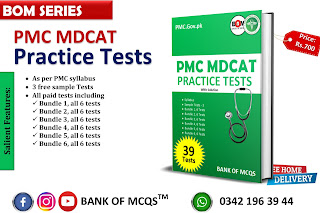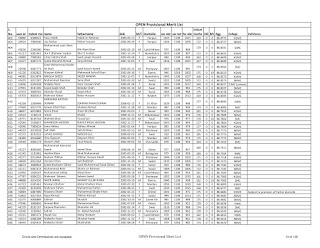Download free 2010-2019 ETEA past papers with key and solution
⬇️Download full book free
- 🖊️ This page is about how to
👉 download free PDF ETEA past papers yearwise.
👉 Download BOM series books samples.
👉 Procedure to buy BOM series books.
👉 Procudure of free bom online Sunday test.
1. 5000 Biology Key Points ( Available 🌟)
2. 5000 Biology MCQs (Coming Soon)
Expected date to launch : 20 February
3. Physics Keypoints & MCQs ( Available 🌟)
4. Physics Chemistry Shortbook (Available 🌟)
5. A Solution to ETEA past papers chapterwise & topicwise (Available 🌟)
6. Chemistry Key points & MCQs (Coming Soon)
Expected date to launch : 20 january
⬇️ Download Sample (New🎆)
7. ETEA past papers yearwise with key (Available 🌟)
You can download this book in PDF but if you want to to buy ,we can print it for you.
8. ETEA English or English Grammar (Coming Soon)
Expected date to launch : 1 march
⬇️ Sample will be uploaded soon
🖊️To order books (🚛 Cash on delivery) , write your
1️⃣ name
2️⃣phone number
3️⃣ extra phone number
4️⃣ full address
5️⃣ Books you need.
And send it on WhatsApp or through sms on 0342-1963944
Available books;
- Biology key points
- Physics key points & MCQs
- Physics chemistry points
- ETEA past papers solved topocwise & chapterwise.
- ETEA original papers yearwise
Prices:
- 1 Book on RS.500
- 2 books RS.950
- 3 books RS.1450
- 4 books Rs. 1600
- 5 books Rs.1700
- 2000 for sixth book,if you want ETEA solved papaers 2010-2019
Thanks
🤳 BOM FREE ONLINE ETEA MODEL TEST PROCEDURE
🤳 BOM FREE ONLINE ETEA MODEL TEST PROCEDURE
Vanadium
1. Vanadium
was discovered by mistaken by Andres Manuel del Rio in 1801.
2. Vanadium
was rediscovered by Swedish chemist Nils Gabriel Sefstrom.
3. The
word Vanadis means goddess of beauty and love in Scandinian mythology.
Oxidation
states of vanadium(23)
4. V+2
→ Violet
5. V+3
→ Green
6. V+4
→ Blue
7. V+5
→ Colorless
As
catalyst as contact process
8. Platinum
was used as catalyst for conversion of SO2 to SO3
but as it is susceptible to poisoning by arsenic impurities
9. Vanadium
oxide V2 O5 is used as catalyst for conversion of SO2
to SO3.
10. V2
O5 is also used as catalyst
in oxidation of alcohol and hydrogenation of olefins or alkenes.
11. Sulfuric
acid is manufactured by contact process.
Chromium
12. Atomic
number 24
13. Corrosion
resistant
14. Discovered
by French chemist Louis Nicolas Vauquelin in1797.
15. Chromium
forms a large number of coloured compounds.
16. 21st
in nature abundance among the elements in earth crust.
17. Atomic
weight 51.996
18. Melting
point 1907 degree C or 3465 0F.
19. Boiling
point 2672 degree C or 4842 0F.
20. Specific
gravity 7.2.
Chromium
minerals
21. Chromite
or chrome iron stone (FeO.Cr2O3).
22. Chrome
ochre (Cr2O3)
23. Crocite
(PbCr2O3)
Oxidation
states
|
oxides
|
CrO
|
Cr2O3
|
CrO3
|
|
Oxidation
state
|
+2
|
+3
|
+6
|
|
Nature
|
Basic
|
Amphoteric
|
Acidic
|
|
|
Ionic
|
Ionize
to some extent
|
Covalent
|
|
|
Chromous
salt
|
Chromic
compound
|
|
|
|
Oxidation
|
Stable
|
Reduction
|
The
chromate – Dichromate equilibrium
24. K2Cr2O4
or solid potassium chromate, when dissolved in water, it forms a yellow
solution.
25. K2Cr2O7
or solid potassium dichromate,when dissolved in water, it forms a orange
solution.
26. The
colours come from the negative ions; CrO4-2 and CrO7-2
.
27. CrO4-2
+ 2H+ are in equilibrium with CrO7-2 + H2O
28. Addition
of acid to the reactant shifts the equilibrium towards right and yield more
orange colour.
29. The
addition of a base promotes the conversion of dichromate to chromate.
Reduction
of chromate (VI) with zinc and an acid;
30. Potassium
dichromate (VI) can be reduced to chromium (lll) and chromium (ll) ions by
using Zinc either dilute sulphuric acid or hydrochloric acid.
Potassium
Dichromate as oxidizing agent in organic chemistry
31. Potassium
dichromate (VI) solution acidified with dilute sulphuric acid commonly used as
an oxidizing agent in organic chemistry.
32. Potassium
dichromate (VI) oxidizes primary alcohol to formaldehyde.
33. Potassium
dichromate (VI) formaldehyde to formic acid.
34. Potassium
dichromate (VI) oxidizes secondary alcohol to ketones.
35. Potassium
dichromate (VI) does not oxidizes tertiary alcohol.
Potassium
Dichromate as oxidizing agent in titration
36. In
redox reaction a standard solution of potassium dichromate K2Cr2O7
is used to determine the unknown concentration of a solution of Fe+2.
37. Dichromate
ion reduces to chromium (III)
→ CrO7-2 +
14H+ +6e → 2Cr+3 + 7H2O
38. Fe
(II) is oxidized to Fe(III).
→ 6Fe+2 →6Fe+3
+ 6e-
39. CrO7-2
+ 14H+ +6Fe+2 → 2Cr+3 + 7H2O + 6Fe+3
40. CrO7-2
→ orange
41. Cr+3 → green
42. The
1:6 mole ratio with respect to amount of CrO7-2 and Fe+2 is consumed.
Manganese
43. Hite,
silvery metallic element
44. Used
in making alloys
45. First
isolated by Swedish chemist John Gorrlieb Gahn in 1774.
46. Corrodes
in moist air.
47. Dissolves
in acids.
48. Melting
point, 1245 degree C or 2271 0F.
49. Boiling
point, 2061 degree C or 3742 0F.
50. Specific
gravity of7.4.
51. Atomic
weight, 54.968
52. Manganese
does not exist in free state, except in meteors.
53. Manganese
is distributed in all world in the form of ores, such as
·
Pyrolusite → magnet
·
Rhodochrosite
·
Franklinite
·
Psilomelane
·
manganite
54. The
word manganese come from Latin world ‘magnes’ meaning magnet.
55. Manganese ranks about 12th in abundance
among elements in Earth’s crust.
Oxidation state of
manganese
56. +7
→ Mn2O7 and MnO4-
57. +6
→MnO3, Manganic salt (H2MnO4) and manganates
(K2MnO4)
58. +4
→ MnO2
59. +3 → H2Mn2O4
and Mn2(SO4)3
60. +2
→[Mn(H2O6]+2,
MnO, MnCO3, MnSO4, MnCl2.
61. +3
→ manganic compound
62. +2
→manganous compounds
Potassium manganite
(VII) as an oxidizing agent in organic chemistry
63. Alkenes
react with potassium manganite (VII) solution in cold.
64. The
colour change depends upon on whether potassium manganite (VII) is used under
acidic condition or alkaline condition.
65. Under
acidic condition manganite (VII) is reduced to manganese (II) ions.
66. Under
basic condition the manganite (VII are first reduced to green manganite (VI)
ions and then to dark brown solid manganese (IV) oxide or manganese oxide.
67. 7
→ 6 (dark green solution)
68. 6→
4 (dark brown precipitate)
Potassium manganite
(VII) as an oxidizing agent in titration
69. KMnO4
is a strong oxidizing agent with intense dark purple colour.
70. During
reduction the purple permanganate ion changes into colourless Mn+2 ion.
71. The
solution turns from dark purple to faint pink colour at equivalence point.
MnO4-
+ C2O4-2+ → Mn+2 + CO2
72. No
addition indicator is used in this titration because KMnO4 acts
itself as an indicator.
73. KMnO4
solution is used to find the concentration of Fe(II) ions in a solution. The
redox reaction is given below;
KMnO4
+ Fe+2 → Mn+2 + Fe+3















